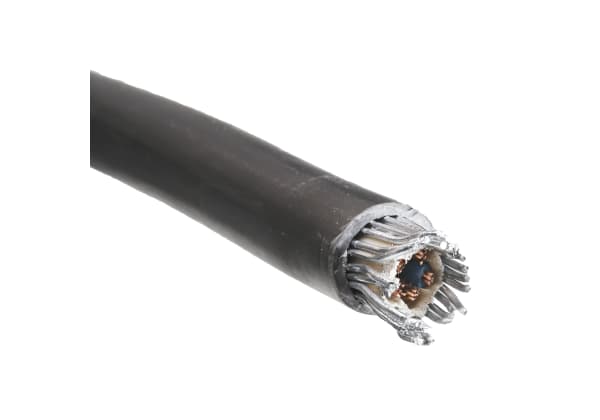- Published 21 Sept 2023
- Last Modified 21 Sept 2023
- 5 min
A Guide to the Future of Wire and Cable Management
Good wire and cable management has a number of benefits, including improved safety and environmental performance. As the fourth industrial revolution continues, and new trends in the electrical industry grow, managing wires and cables effectively has never been more important.
Wire management and cable management is growing as demand for wires and cables increases exponentially. That demand is driven by a number of factors: increasing urbanisation, the development of a new, smarter power transmission grid, the electrification of sectors such as transport, electrical maintenance and electrical safety best practices. The market for cables and wires is also booming thanks to the connection of increasing amounts of renewable energy resources. Meanwhile, the ongoing development of Industry 4.0 is seeing demand for connections soar as the physical world becomes ever more connected to the internet.
Recent Trends in Electrical Technology
Electrification is a global megatrend. We’re taking technologies that used to rely on fossil fuels such as the internal combustion engine and gas-fired boiler and replacing them en masse with electric vehicles and heat pumps. Experiments are taking place with electric aircraft and engineers are also looking at electric propulsion of marine vessels, with the potential to decarbonise global trade on the oceans. In order to avoid burning oil and gas to generate electricity, renewable energy sources such as offshore wind and solar are being connected to the grid in ever-greater numbers (the UK, for example, has a target of connecting 50GW of offshore wind capacity by 2030).
Electrification is spurring global demand for wires and cables, and the market is also benefiting from a strong demand. IT, telecoms, building, construction, and best practices of electrical control wiring are spearheading this demand. That means that wire management and cable management products are needed more than ever.
Let’s take a more detailed look at some of the areas where cables and wires are proving critical.
The Internet of Things and Industrial Internet of Things
Q: What connects heart monitors, smartwatches and today’s most advanced factory machinery?
A: The Internet of Things (and its industrial big brother, the Industrial Internet of Things).
The Internet of Things (IoT) is a network of physical objects that exchange data with each other over the internet and in the cloud. It includes everything from consumer tech to machine tools embedded with sensors, to autonomous vehicles communicating with each other on a highway.
In fact, any object that can be assigned an IP address and transfers data over a network can become part of the Internet of Things. This increasing number of connected devices requires, well, an increasing number of connections (USB, ethernet, power and HDMI cables, to name but a few). IoT devices may communicate wirelessly or in the cloud, but they still require physical cables in many cases for connection and power supply.
Electronics
Every week, millions of electronics cables are manufactured and used in a number of sectors including energy and utilities, manufacturing, and commercial and residential construction. The global wires and cables market was worth in excess of $200 billion in 2022 and is forecast to grow at a healthy 4.2% each year to 2030. Types of cables used in electronics include fibre-optic, power, USB, and audio and video cables.
Automation
The fourth industrial revolution is increasing the amount of automation in manufacturing. That entails greater use of robotics, protecting people from having to carry out hazardous manual work, and freeing them up to do other tasks, but also increased digitalisation, which means more wire and cable management systems.
Electric Transportation
Did you know that electric vehicles have been around since the 19th century, when electricity was the preferred power source for fledgling cars? Today, EVs encompass not just automobiles but trains, buses, marine craft, aircraft, and spacecraft. However, it’s not only electric cars that rely on electric cables. Generally, today’s passenger vehicles contain thousands of feet of wiring thanks to the proliferation of electrical and electronics systems within them.
What is Cable Management Best Practice?

Electrical safety best practice also means best practice when it comes to cable management. Cabling should be identifiable, routed correctly, organised and supported so problems can be easily fixed. We offer a range of cable management solutions including cable covers, markers, rods, and trays.
Here’s just some of the advantages of good cable management and wire management:
- Improved Safety
Poor cable management can present a safety issue. It could potentially expose someone to an electric shock, or present a trip hazard. Good cable management is an electrical safety best practice and helps meet the stringent British standards for electrical equipment and machinery.
- Reduced Waste
Cables are essential to many forms of modern products and infrastructure. However, they carry an environmental penalty too, typically using polymer compounds which can be difficult to recycle, or may end up in landfill. An effective cable management regime reduces cable waste when proper electronics recycling is sometimes ignored.
- Minimised Maintenance Time
Cable management not only extends cable lifespan but minimises the risk of damage and therefore reduces maintenance time (and thereby, cost).
Did you know we offer a high-quality, extensive range of cables and wires? These include instrumentation cables, ethernet cables, and equipment wire. RS cables also meet stringent environmental regulations, including the RoHS (Restriction on Hazardous Substances) which requires electronics manufacturers to prove that their products are free of certain chemical substances. All RS wires and cables are RoHS-compliant.
Related Articles
Related links
- IR Security And Safety Deadlock Cylinder
- IR Security And Safety Sashlock Cylinder
- Guide to Cables
- Rack Cable Management
- Alpha Wire Expandable Braided Tinned Copper Silver Cable Sleeve 30m Length, FIT Wire Management
- Alpha Wire Expandable Braided Fiberglass PVC Black Cable Sleeve 30m Length, FIT Wire Management
- Cable Grommets
- Bosch Rexroth Structural System Cable Management



